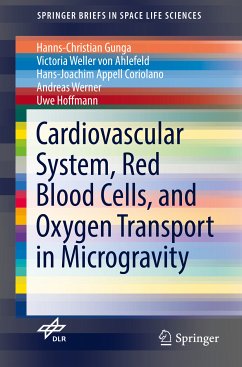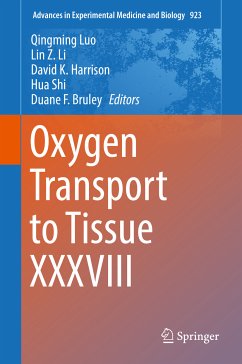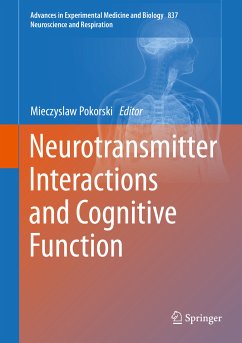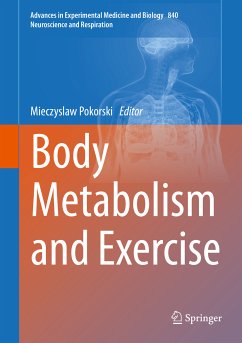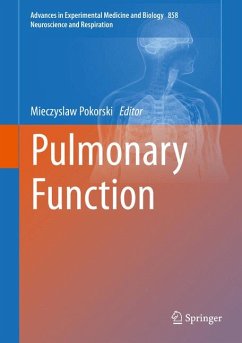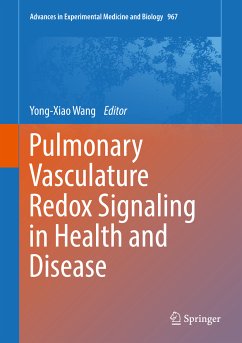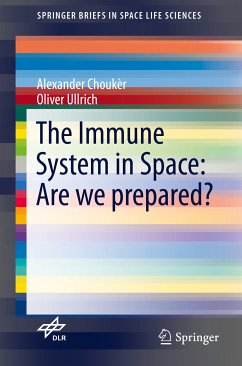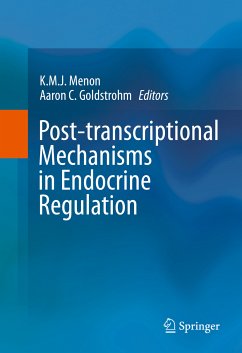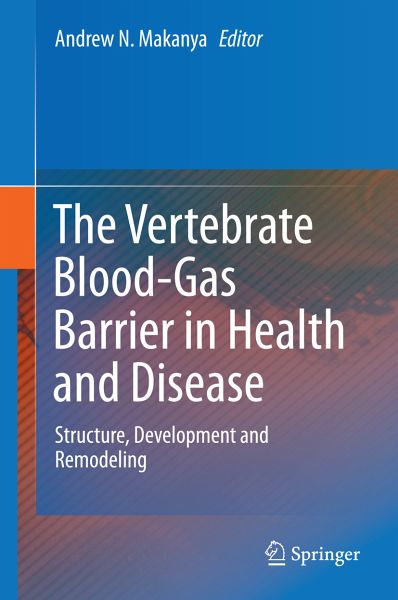
The Vertebrate Blood-Gas Barrier in Health and Disease (eBook, PDF)
Structure, Development and Remodeling
Redaktion: Makanya, Andrew N.
Versandkostenfrei!
Sofort per Download lieferbar
72,95 €
inkl. MwSt.
Weitere Ausgaben:

PAYBACK Punkte
36 °P sammeln!
This comprehensive volume on the blood-gas barrier (BGB) among vertebrates covers its structure and composition along with aspects of evolution, bioengineering, and morphometry. The book also discusses the embryological development of the BGB, including chronology of events and molecular control in vertebrates; modulation of the barrier function, including cyclic stretch-induced increases in alveolar epithelial permeability; mechanisms of lung vascular/epithelial permeability; transport mechanisms of the BGB, including sodium transport channels; factors affecting trans-barrier traffic of fluid...
This comprehensive volume on the blood-gas barrier (BGB) among vertebrates covers its structure and composition along with aspects of evolution, bioengineering, and morphometry. The book also discusses the embryological development of the BGB, including chronology of events and molecular control in vertebrates; modulation of the barrier function, including cyclic stretch-induced increases in alveolar epithelial permeability; mechanisms of lung vascular/epithelial permeability; transport mechanisms of the BGB, including sodium transport channels; factors affecting trans-barrier traffic of fluids, such as chronic elevation of pulmonary microvascular pressure; stress failure; regulation and repair in acute lung injury; chronic lung disease; and lung transportation.
Ten authoritative chapters approach the blood-gas barrier holistically, from basic structure and development to pathology and treatment. Properties of the BGB are discussed in the earlier chapters, followed by prenatal and post-natal development and mechanisms of the healthy BGB. The latter half of the book delves into the pathology of the BGB, analyzing common afflictions and exploring options for treatment, including its alterations during lung transplantation. Intuitively structured and comprehensive, The Vertebrate Blood-Gas Barrier in Health and Disease is ideal for researchers and clinicians interested in pneumology and angiology.
Ten authoritative chapters approach the blood-gas barrier holistically, from basic structure and development to pathology and treatment. Properties of the BGB are discussed in the earlier chapters, followed by prenatal and post-natal development and mechanisms of the healthy BGB. The latter half of the book delves into the pathology of the BGB, analyzing common afflictions and exploring options for treatment, including its alterations during lung transplantation. Intuitively structured and comprehensive, The Vertebrate Blood-Gas Barrier in Health and Disease is ideal for researchers and clinicians interested in pneumology and angiology.
Dieser Download kann aus rechtlichen Gründen nur mit Rechnungsadresse in A, B, BG, CY, CZ, D, DK, EW, E, FIN, F, GR, HR, H, IRL, I, LT, L, LR, M, NL, PL, P, R, S, SLO, SK ausgeliefert werden.



